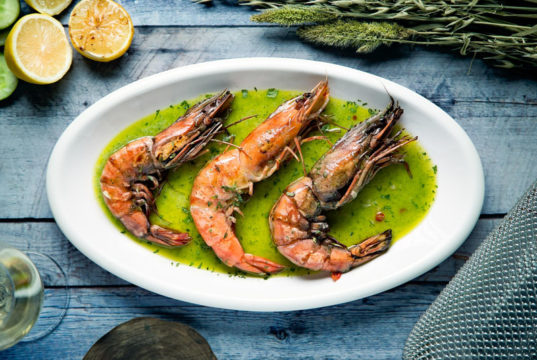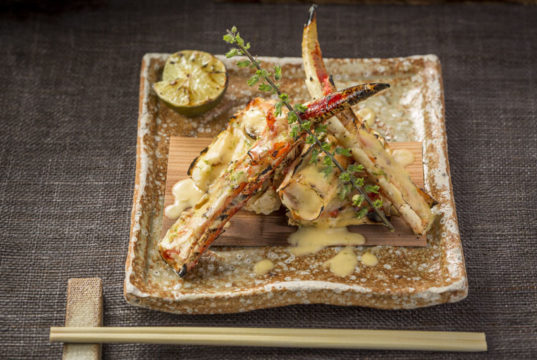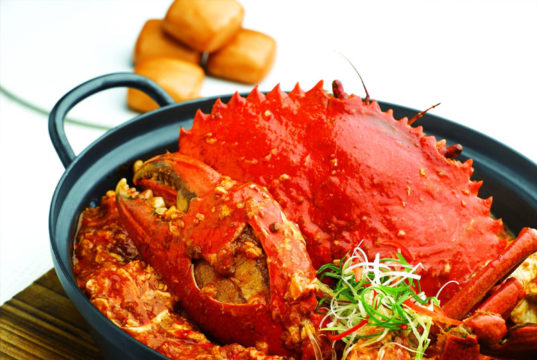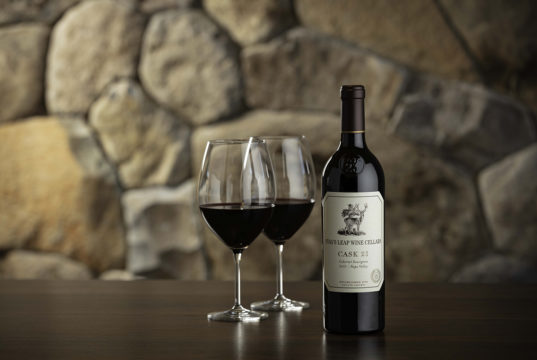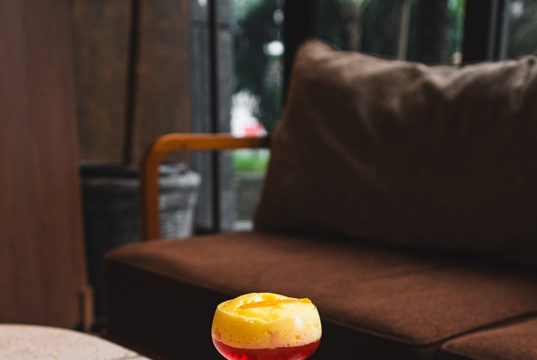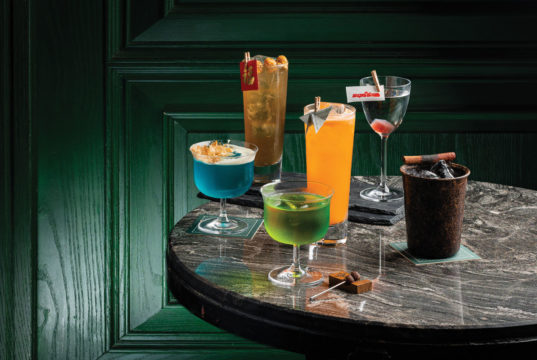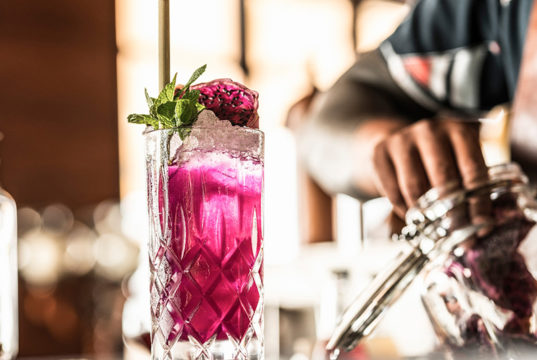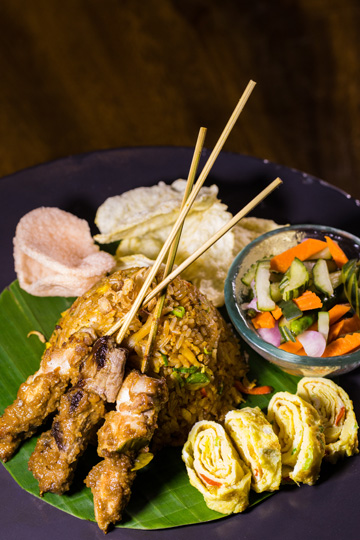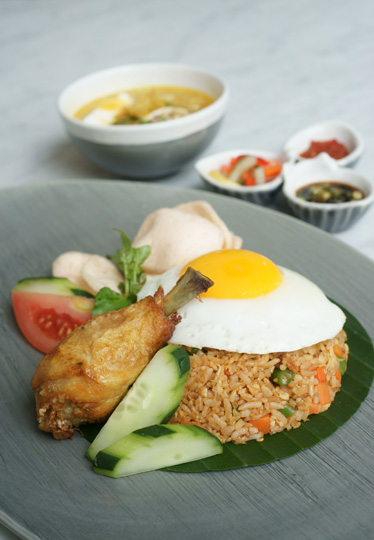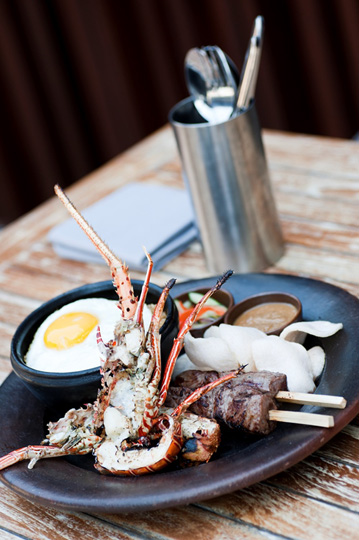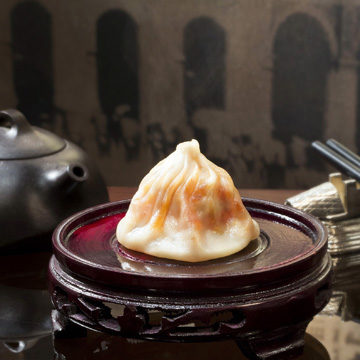Available on just about every Indonesian street and from some of the best restaurants throughout the nation, nasi goreng is a staple national dish. It shares the same humble beginnings as the myriad of other versions of fried rice seen throughout Asia as a way to avoid wasting cooked rice, of course, but the Indonesian versions tend towards being more fiery. Available just about any time of the day, it was traditionally served at breakfast and made by using the leftover rice from the previous evening meal with shallots, tomato, chilli and scraps of meat or prawn fried together with garlic, shrimp paste, spices and egg. Copious amounts of sweet soy sauce are drizzled in and caramelised throughout cooking, which adds to its distinctive smoky and earthy taste and smell. It varies significantly throughout the country as local versions have evolved to exploit local produce and local tastes. As a restaurant dish, it is generally served with sambal, crackers, satay or fried chicken and often topped with a fried egg, whilst more creative restaurants have developed elaborate twists serving it as an accompaniment to lobster or freshwater crayfish, for example.
–
Kwee Zeen
Indonesian fried rice – nasi goreng – was placed second in the World’s 50 Best Foods by CNN in 2011, pipped to top place by Indonesia’s rendang. We have to agree that a good nasi goreng is a divine comfort food. At the Sofitel Bali Nusa Dua’s Kwee Zeen restaurant, Chef de Cuisine Isep presents a mouth-watering plate of goodness with surprisingly multi-layered flavours. It’s what his grandmother would have cooked if she was a five-star chef.
Using only the finest ingredients, the spices are cooked to fully develop the flavours and fragrances and become a heavenly paste that serves as the base. The rice is then fried in the spicy paste along with finely sliced onion, carrot and shallots and served with either rolled omelette or a fried egg on top, as well as succulent chicken satay in peanut sauce, with shrimp paste sambal and pickled vegetables on the side to offer the perfect contrast to the gorgeous fried rice. Heaven on a plate.
(www.sofitel-bali-nusadua.com)
–
Maya Sanur
A large scoop of fried rice served with pickles, various homemade sauces, crackers, fried chicken and topped off with an egg; the nasi goreng at Reef is true to its village roots but cooked using only the best ingredients. Rich and wholesome, the taste, texture and presentation is authentic whilst the spiciness à la carte is fairly mild, but fear not if you want it hot, the chef will make it as spicy as you like. Choose from a range of seating overlooking the turquoise waters off Sanur, including romantic gazebos set amongst the frangipani trees and water features. Reef’s lunch menu also includes a range of healthy salads, sandwiches, wood-fired pizzas and fresh seafood making it ideal for groups and families too.
So if a traditional style nasi goreng lunch served in a classy, relaxed beachside restaurant is what tickles your taste buds, then why not head over to Reef at the Maya Sanur and pick up a real treat?
–
The Stones Hotel-Legian, Bali – a Marriott Autograph Collection Hotel
Generally speaking, nasi goreng is often one of the cheapest items on a menu – comfort food that can be enjoyed at any time of day. However, if you’re dining at The Stones Hotel – Legian Bali, the humble nasi goreng has been transformed into a five-star masterpiece and is subsequently one of the resort’s standout dishes. This particular gourmet take on Indonesia’s national delicacy sees giant hunks of the finest Wagyu beef gorgeously skewered and loaded atop a giant bowl of moreishly fried rice, served alongside a whole lobster tail that has been smothered with buttery goodness. Crowning the dish, a perfectly fried egg and its bright yellow yolk begs to be broken, oozing its molten deliciousness throughout each delectable bite. Indulgent, rich and downright delicious, who knew comfort food could be so sumptuous?







